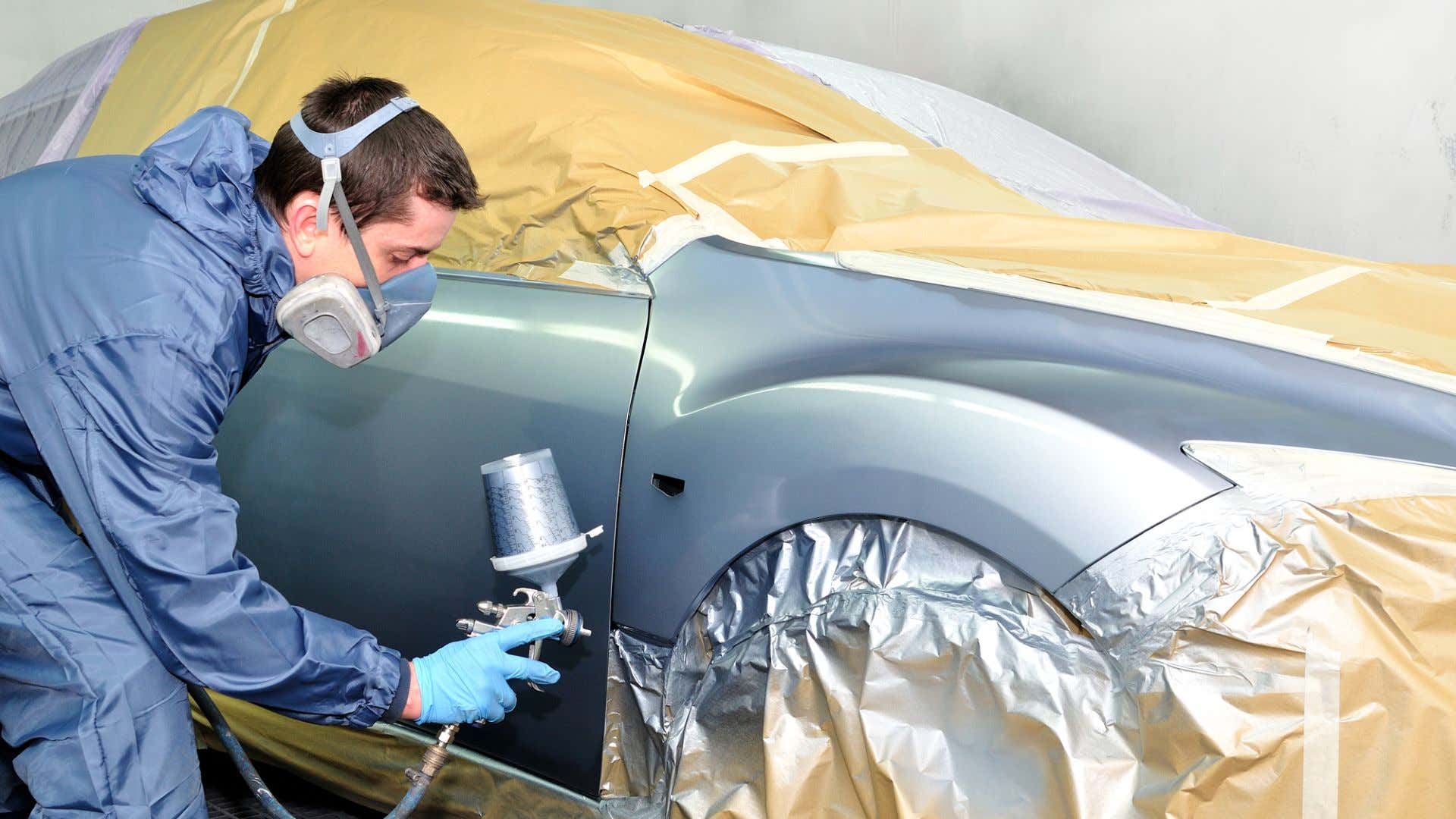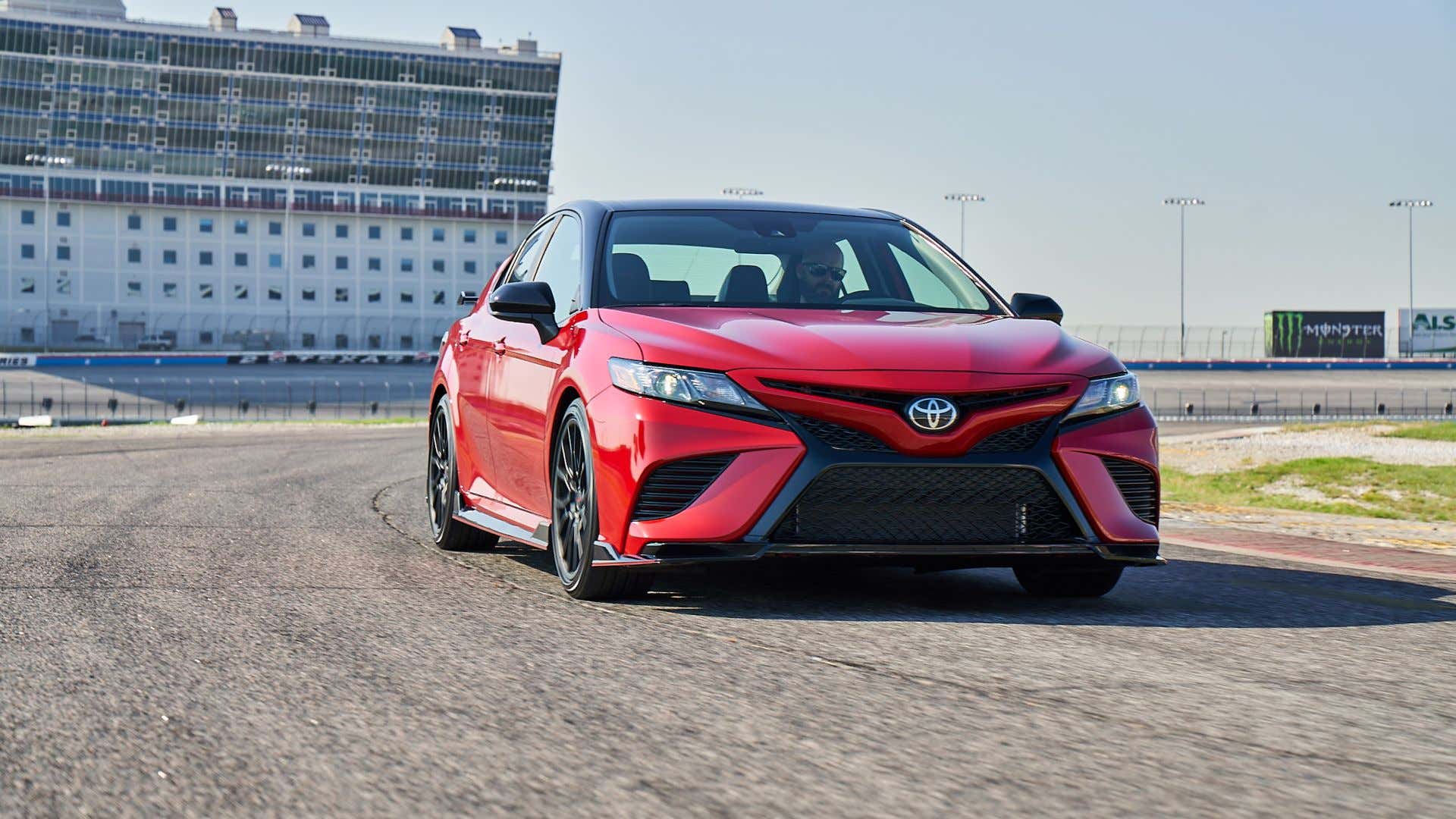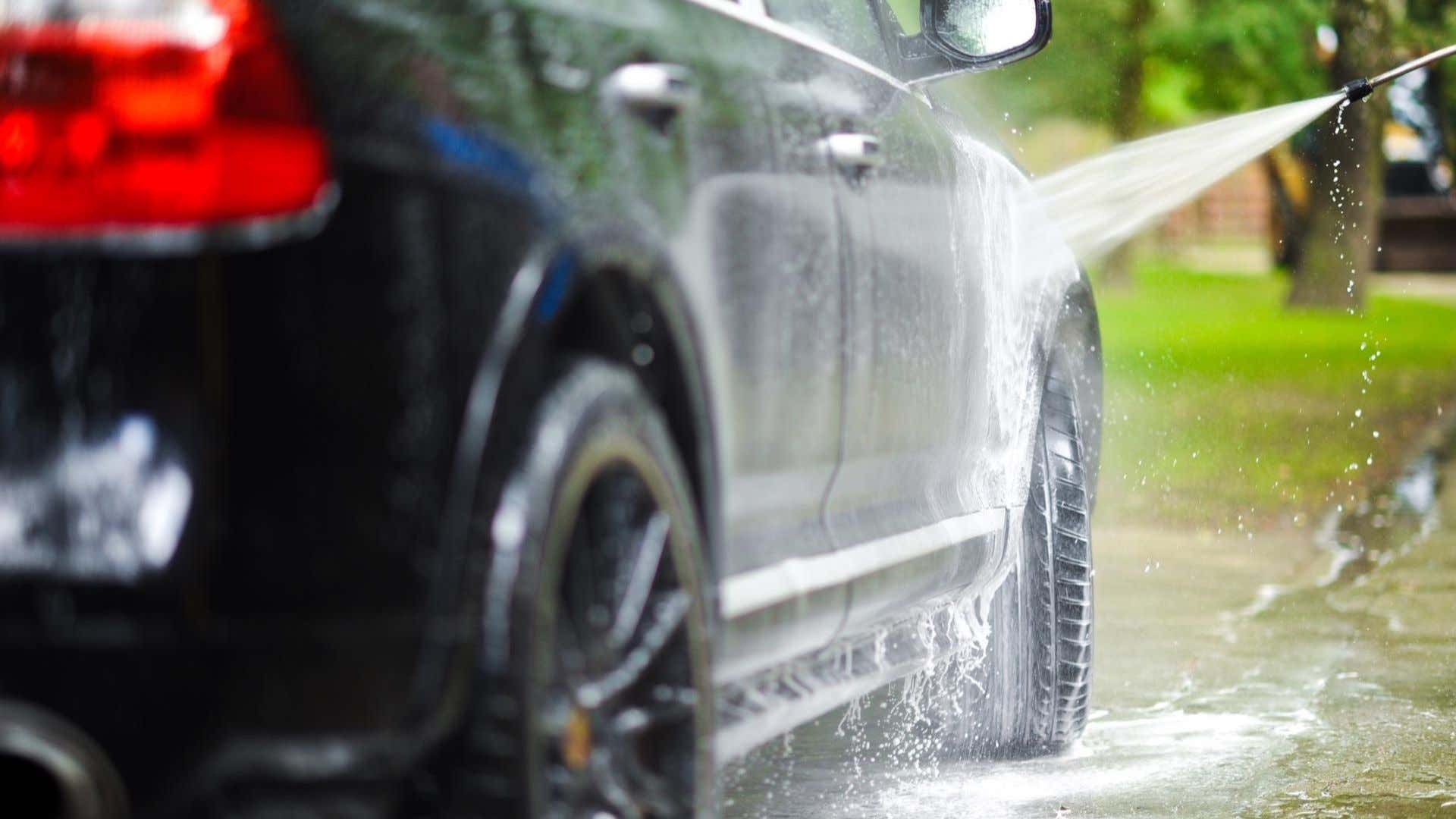How Much Does It Cost To Paint A Car?
After a while, that shiny new car you were so proud of starts to look dingy and faded. The paint has taken a beating over the years and all you’re left with is a car in a different color (or colors) than the one you started with. You could throw in the towel and just buy a new car, but those are the words of a quitter. Your other, much braver choice is to have the car painted by a pro, or yourself, to restore its former glory.
Every shop is a little bit different on pricing because of variations in quality, skill level, and the type of paint job being done. It’s probably obvious that painting a Ford Econoline van is going to cost more than painting a Volkswagen Golf, but there are plenty of other factors that play into the costs of painting a car. As does doing it yourself, though we caution anyone who thinks it’ll be a simple job.
The Drive’s crack information squad has tracked down the costs associated with a wide range of paint services to give you a good idea of what to expect. So, before you give up and either sell your car or resign yourself to rattle-canning primer over the faded spots, stick with us to get the lowdown on painting a car.

Depositphotos
A perfectly red Pontiac Trans-Am fire chicken.
How Much Does It Cost to Paint a Car?
The costs to paint a car vary depending on where the work is done, the size and complexity of the vehicle to be painted, and the quality of the paint job itself. In general, expect to pay anywhere from $300 to upwards of $10,000 for a professional paint job. The upper end of that price is where we find metal flake, multi-colored, and custom paint jobs, so unless you’re prepping your car for a show there’s really no need to spend that much.
If you feel that you’re skilled enough to do the job at home, and keep in mind that this is a big if, you can get a similar result for much less money. Supplies can run anywhere from $100 to $1,500, depending on what you already have at home. Also, keep in mind that if you don’t have a well-ventilated area where dust and debris can’t get to your new paint job, it’s probably best to let a pro do the work.

Depositphotos
A painter using a paint spray-gun.
What Affects the Cost of Painting a Car?
Like many things in life, you’ll absolutely get what you pay for when it comes to professional paint jobs. You can swing into a budget shop and be out the door for $500, but don’t expect it to be a top-notch job. In general, you can count on paint job prices to vary based on:
- The magic fingers car wash. A solid, high-quality paint job averages around $5,000.
Size of the Vehicle:
- Painting a Geo Metro is going to cost a lot less than painting a Cadillac Eldorado, based only on the fact that the Caddy’s got quite a bit more real estate that needs painting.
Additional Repairs Needed:
- If you can’t leave the Starbucks parking lot without curb surfing, you’re going to pay extra to have any damage repaired prior to having the vehicle painted.
Color:
- Choosing a mainstream color like black, white, or grey is the cheapest way to go. If you want a specialty color, especially one used by a premium automaker, you’ll pay more. Also, keep in mind that changing your vehicle’s color will cost more because of the work it will take to paint the engine bay, door jambs, and more.
Quality and Paint Preferences
- A single-coat synthetic enamel paint job can be had for as little as $300. Prices can range up to around $1,000 for this type of paintwork.
- A higher quality paint job that includes bodywork, such as dent/rust/damage repair, can cost as much as $3,500.
- Multi-coat, high-quality paint jobs can cost as much as $8,000 or more, depending on color and vehicle. Extras such as racing stripes, metal flake, and candy coat colors all add to that price tag.

Depositphotos
Paint in all the colors of the rainbow.
Factors to Consider When Changing Your Car’s Color
Most of us have considered changing our vehicle’s color, but very few actually go through with it. That’s for a few reasons, mainly related to cost and time because changing a car’s color is a lot more involved than just painting in the same shade. Before changing your car’s color consider:
- No matter how subtle the color change is, all of the old paint will need to be removed. If it isn’t, the old color will show up every time a door or the hood is opened, and if the change is drastic, there could be some bleed-through from the old to new colors.
- Painting a vehicle in a different color is more expensive and takes longer to complete. If done correctly, the color change will involve painting the inside of the vehicle’s engine bay, door jambs, trunk lid, and other surfaces that are usually hidden
- The extra time and effort a paint color change requires will cause the cost to rise. Changing paint colors will easily cost as much as the highest quality standard paint job and may be even more, depending on how drastic the color shift.
- Painting a vehicle in a different color also affects its resale value. This is less important with newer, more mainstream vehicles, but with collector’s cars, the color can make a big difference in selling price.
- If you change the color of your vehicle, you’ll also have to change the color on its registration and any other documentation, such as insurance cards.
Things You Should Never Do With a Freshly Painted Car
If you’ve just spent the time and money having your vehicle painted, you’re going to want to take care of it to ensure that the new paint job stays fresh for as long as possible. To protect your new paint, never:
Wash the Car Right Away
Though the paint is dry, you’ll want to avoid washing it for at least a month to allow the paint to cure and set properly.
Drive Unnecessarily
Driving too much out of the gate can damage your new paint job. Let it rest as much as possible for the first month or two to ensure that the paint has properly cured.
Park Under Trees
Take care to avoid parking where tree sap and bird droppings can defile your new paint job.
Leave the Shop Immediately
Even if you trust your body shop to a high degree, take a minute to inspect the new paint job for imperfections and to assess the overall quality. Don’t leave until you’re happy with what you see.

Toyota
Car Painting Safety
Paint and chemicals are plentiful in this process, so it’s important to keep your wits about you. Take these precautions to get through the process alive.
- Cover your body and wear eye protection. Use a respirator, nitrile gloves, safety glasses, and coveralls with a hood.
- Work in a well-ventilated area. Breathing in paint fumes may make you feel good for a moment, but you need to hold onto all the brain cells you can.
- Don’t work near open flames or near other chemicals that could react with the paint
Everything You Need To Paint a Car
If you decide to go through the hassle to paint a car yourself, you’ll need equipment. Fortunately, the most expensive items are probably able to be rented instead of purchased to save money.
Tool List
- Air compressor
- Paint sprayer
- Power sander with pads
- Hand sandpaper in 120, 600, 1200, 1500, and 2000 grits.
- A metal grinder
- Painter’s tape
- Auto body filler and a putty knife
Parts List

Honda
A Honda Civic Type R wears its Phoenix Yellow proudly.
How To Paint a Car
Before you get started, you’ll need two things above all else: time and space. Give yourself enough time to sand, repair, paint, and dry your vehicle. This is a crucial step that can save you big headaches with smeared or damaged paint. Space is vital, because unless you’re a machine (you’re probably not), painting a car will take time. You’ll need a safe space to store the car where the paint job can be done without damaging the paint or annoying your neighbors.
Now that the disclaimer is out of the way, let’s do this!
- Clean your workspace to get rid of unwanted dirt and dust.
- Sand your vehicle until you get an even layer of metal, in the case of rock chips, or below the clear coat. This will take time, so work methodically and during when you won’t need to use your car too much. Each time your car leaves the garage, it will need to be cleaned again or else it could oxidize and rust.
- Wipe down the vehicle with a clean rag and paint thinner to make sure all paint residue is gone.
- Tape off the areas that you don’t plan to paint, such as windows, trim pieces, and wheels.
- Mix your paint with thinners according to the directions or The Drive’s guide for How To Mix Automotive Paint.
- Spray on the paint using gentle, smooth motions. This process will take three to four coats. You’ll want to take half an hour up to a day after each coat is finished to allow drying.
- Take the fine-grit sandpaper (2000-grit or higher) and smooth out any imperfections in the paint before applying the clear coat.
- Apply the clear coat and then leave the car alone to cure. This may take a day.
You’re done!

Depositphotos
Wash your car only after the paint dries.
FAQs About Painting a Car
You’ve got questions, The Drive’s got answers!
Q. Why Was My Paint Job So Expensive?
A. Assuming you opted for good quality paint and had the vehicle painted at a reputable shop, you’re paying for the time and effort it took to ensure the paint will last beyond the first car wash.
Q. Do Some Colors Fade Faster Than Others?
A. There is no proof that some colors fade faster than others. What you might be seeing is that dark colors show fading more visibly than lighter colors.
Q. How Much Does It Cost To Fix The Paint On A Car?
A. Costs will vary depending on the damage. A paint touch-up could cost as little as $50, while a substantial repair col
Q. Does Insurance Cover Minor Scratches On Car?
A. Your insurance policy will likely cover scratches on your car, so long as the damage was caused by something that your insurance covers, like a car wreck. It should be noted that having your insurance cover small scratches may cause your premiums to rise.
Q. What Can I Do To Make My Paint Last Longer?
A. You may not have access to a garage, but try to keep the vehicle covered and sheltered as much as possible. Keep the paint clean and wax it every other month or so to keep the protective layers in place. Also, don’t wash with dish soap. Ever.
Q. How Do I Detail My Car?
A. Detailing involves thoroughly washing the exterior and interior of your vehicle. Check out our guide on how to detail like a pro.
